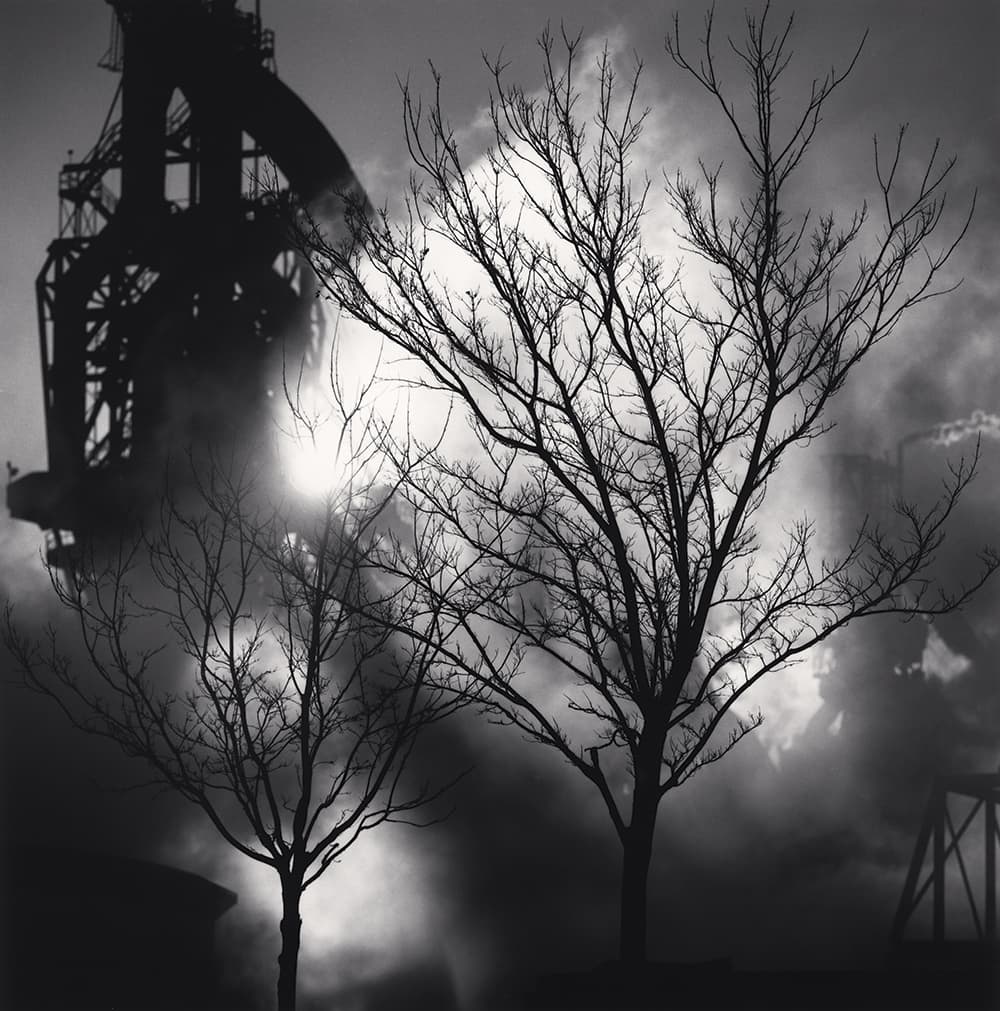
The Rouge, Study 99, Dearborn, Michigan, USA, 1995. All photos by Michael Kenna
In Dearborn, Michigan, USA, there stands a monument to human ingenuity and utopic industrialisation. It was once considered one of the most advanced of its kind in the world and represented the pinnacle of American industrial achievement. Between 1917 and 1928 the Ford River Rouge complex was the largest integrated factory the world had ever seen. Nothing like it had been attempted before, and it was thanks to the vision of Henry Ford and the interpretation of that dream by architect Albert Kahn that a thronging, almost alive, industrial Shangri-La was conceived.
The site, a Ford Motor Company automobile factory complex, was a modernist dream. Take, for example, the glass walls that were lightweight, inexpensive and allowed the sun to stream in unfiltered, and bathe the factory floor and its 100,000 workers in brilliant daylight. Upon its construction, the watchwords were efficiency, economy and balance.
Even without being there you can get a sense of the factory’s scale from mere description, with miles of railroad tracks, blast furnaces, coke ovens, a foundry and vast storage areas for holding raw materials. Rouge was the beating heart of the Ford Motor Company, churning out the Model A car, the first V8 engine, and a plethora of aircraft engines and parts during the Second World War. The site was so large and so densely populated that it had its own hospital, fire department and police force. It was an entirely self-sufficient society – one moulded and driven by endless capital; the most sought-after; sacred; and at times, insidious of American Dreams.
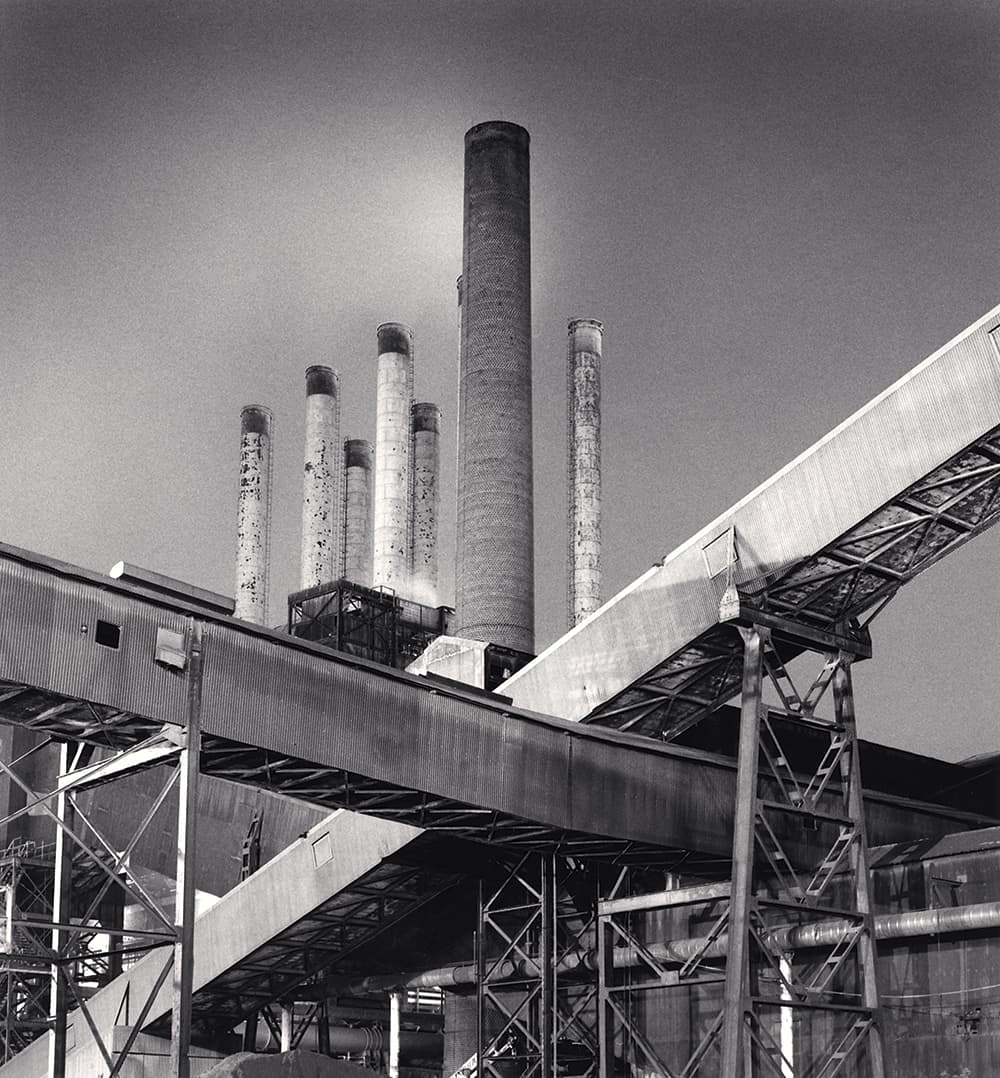
The Rouge, Study 52, Dearborn, Michigan, USA, 1994
Memories and traces
The obvious end to this story would be that the Rouge complex collapsed in on itself and stands as a monument to one of history’s greatest lessons: all utopias will eventually fall to ruin. However, the complex, while not exactly the buzzing industrial complex it once was, still somewhat functions. It contains six Ford factories as well as operations run by US firm AK Steel. In fact, parts of it were recently subject to renovation under the eye of architect William McDonough. But truthfully the area is a shadow of its former self, and one that as time moves on will likely reduce further and further. As glorious as the original vision may have been, it’s not impervious to the inevitable.
The Rouge complex is now a place where nature and industry are engaged in a battle of wills. This is where photographer Michael Kenna comes in. In 1927, photographer Charles Sheeler was commissioned to take images that exalted the Rouge complex, and Kenna uses these images as his starting point. As he himself admits, Kenna is a photographer who often makes ‘pilgrimages’ to sites where other photographers have worked. In this way, he is able to adapt and morph his own personal vision of a space.
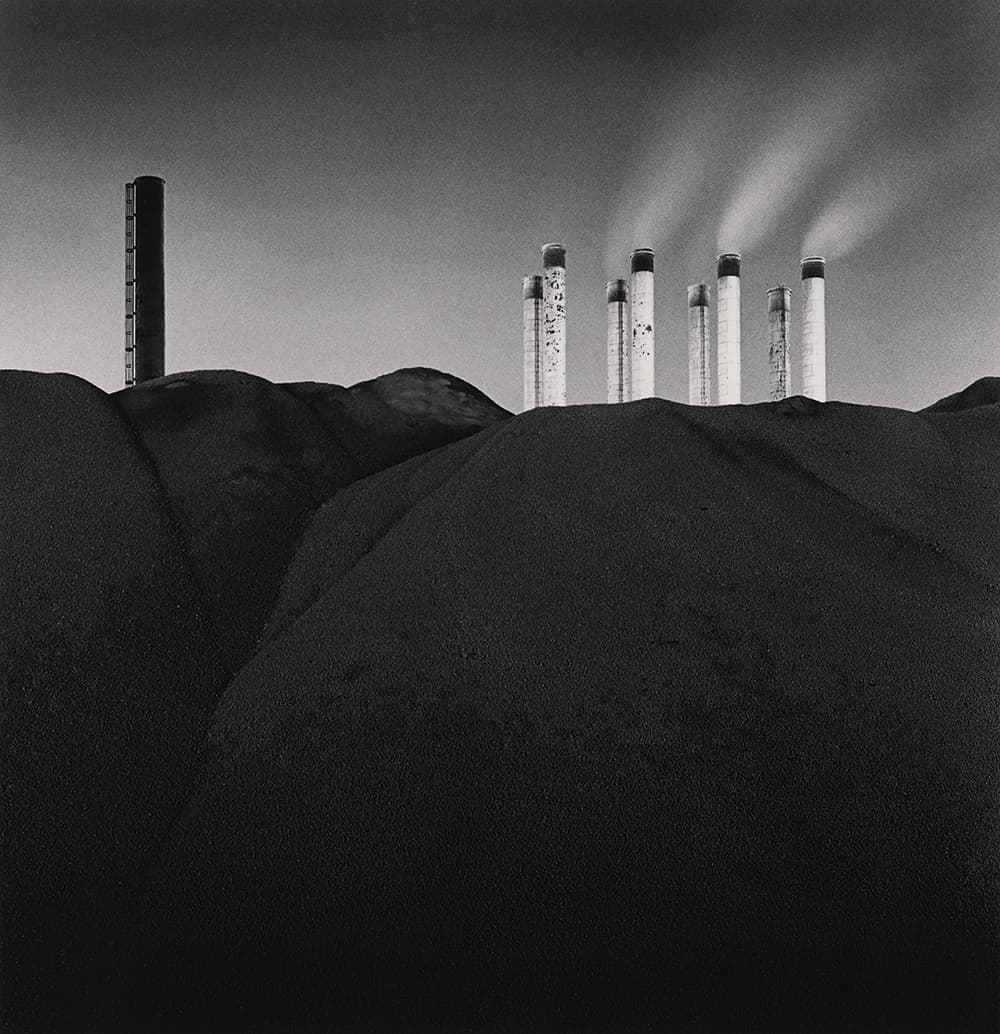
The Rouge, Study 18, Dearborn, Michigan, USA, 1993
Anyone familiar with Kenna’s work will immediately see what that means within the context of this project. Kenna, who works exclusively with black & white, is a name synonymous with minimalism. His images are notable for their sparse content and their ability to get to the heart of a space by using the most reduced elements available. While some of Kenna’s images here in Rouge may appear busier than usual, a closer look reveals a series of frames that still employ his economy of style. Rouge’s focus is primarily on memories and traces – as Kenna himself says, it is the ‘evidence of human activities’. The images show us the monumental indifference of decay and of a nature fighting to reclaim its spaces. It’s a project of contrast – the embarrassment of our relics casting a shadow over a site still fighting to function.
Every one of the images seems to have been dug up from the earth – from a time neither now nor then – and as a result a feeling of ominous inevitability hangs over the project.
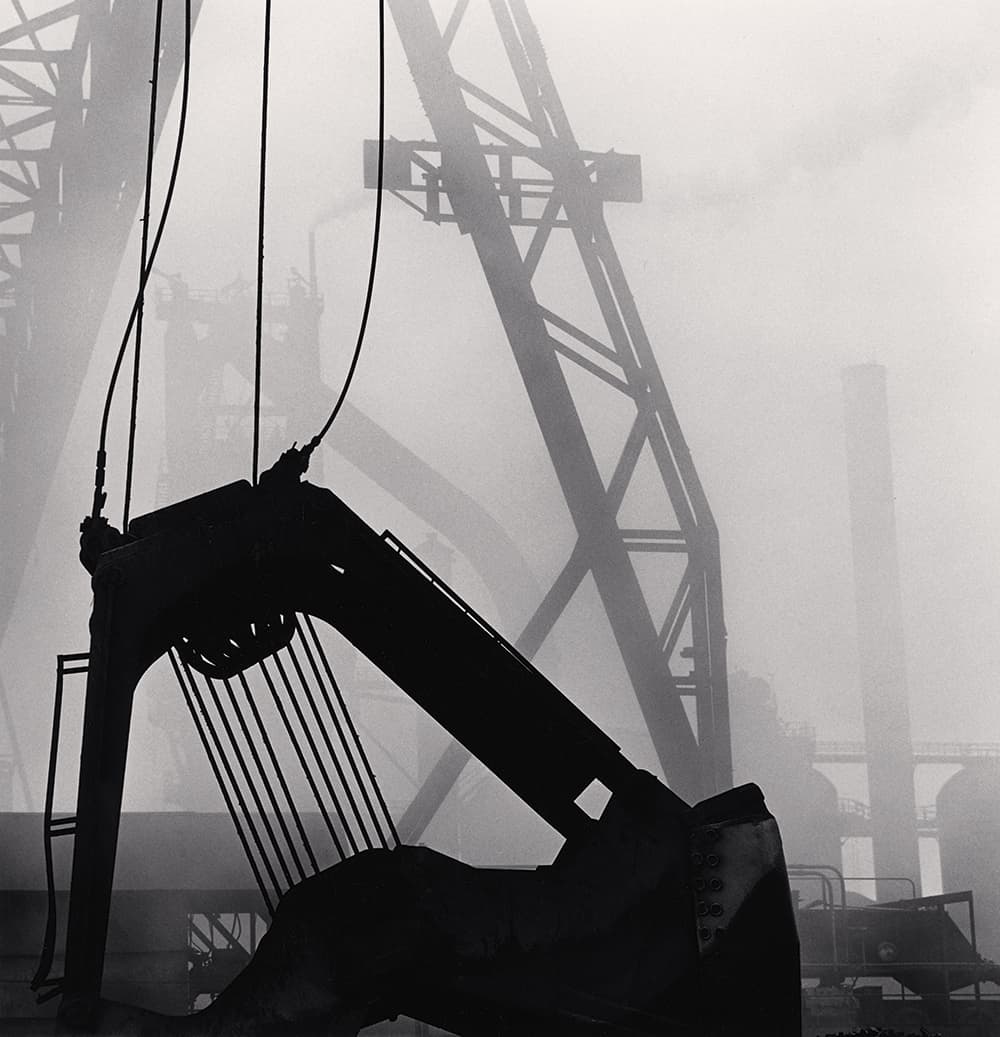
The Rouge, Study 5, Dearborn, Michigan, USA, 1992
Rouge is perhaps Kenna’s most interesting and conceptually fascinating project to date. It’s one with a clear narrative that can be interpreted in a variety of ways. For me, Kenna’s project is about the fragility of ambitious perseverance in the face of unpredictable economics and a landscape unsympathetic to human ingenuity. It evokes the same feelings one can experience witnessing the unearthing of human artefacts and structures in the middle of an inhospitable desert region. It is haunting and humbling, and in many ways – living as we do in such uncertain times – entirely prescient.
SCORE: 5 out of 5
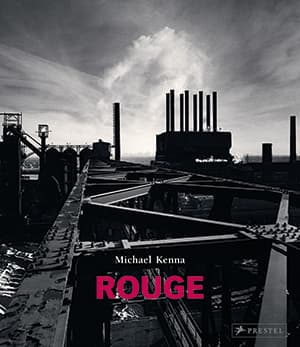
Published by: Prestel
Price: £45, 192 pages, hardback
ISBN: 978-3- 79138-297-5







